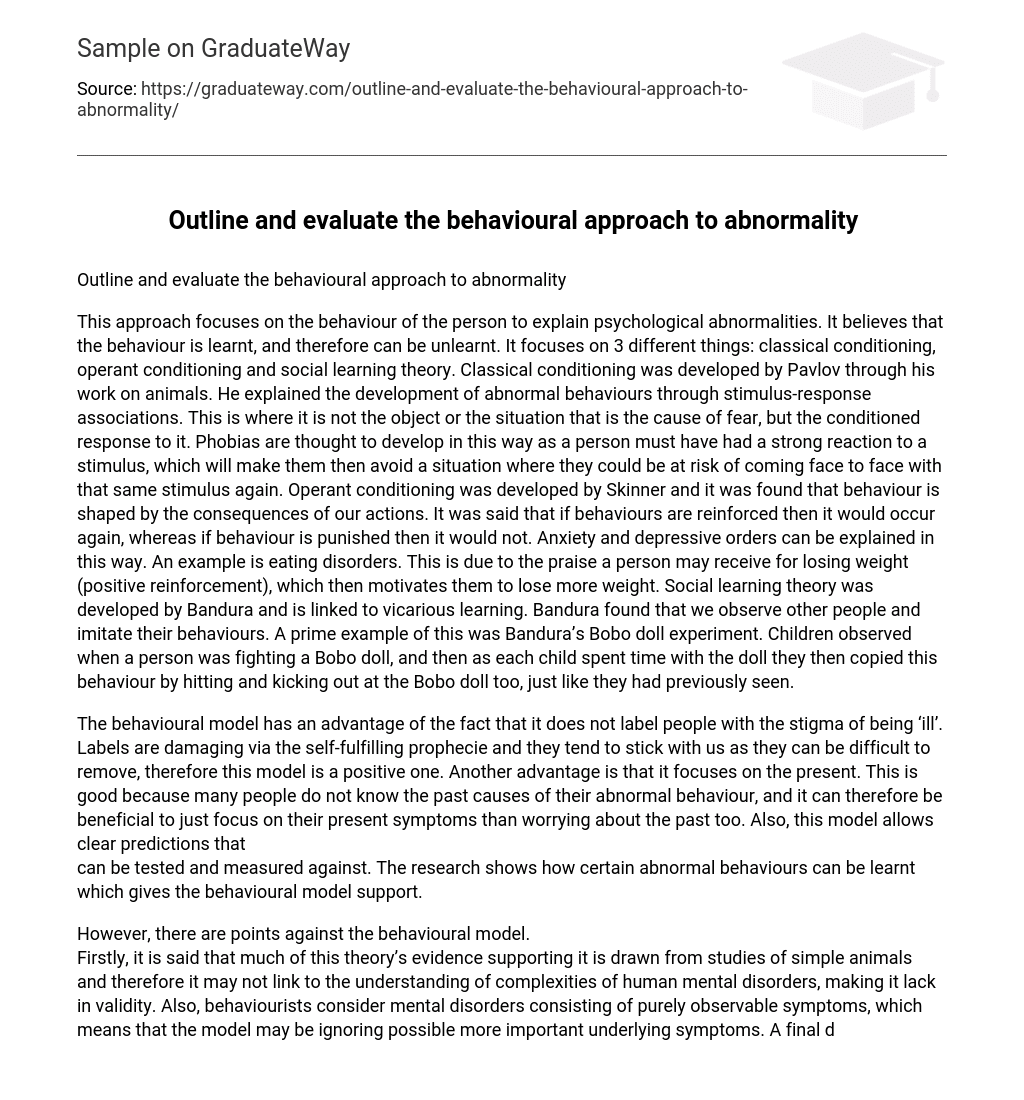This approach centers around the explanation of psychological abnormalities based on individual behavior. It asserts that behavior can be both acquired and unacquired. The approach highlights three primary aspects: classical conditioning, operant conditioning, and social learning theory.
Classical conditioning, established by Pavlov in his animal research, suggests that abnormal behaviors arise from associations between stimuli and responses. This implies that it is not the object or situation itself that triggers fear but rather the conditioned response to it. For instance, phobias develop when individuals have a strong reaction to a stimulus and avoid situations where they might encounter it again.
Operant conditioning, introduced by Skinner, demonstrates that behavior is influenced by consequences. If a behavior is rewarded or reinforced, it becomes more likely to be repeated; if punished, it is likely to cease. This perspective explains anxiety and depressive disorders. Additionally, eating disorders can occur due to positive reinforcement such as receiving praise for weight loss which motivates individuals to continue losing weight.
Furthermore, Bandura’s social learning theory connects with observational learning. Bandura discovered that we observe others and imitate their behaviors.Bandura’s Bobo doll experiment serves as a notable example of this phenomenon. In the study, children who spent time with the doll witnessed someone else exhibiting aggressive behavior towards it. Consequently, they imitated this behavior by hitting and kicking the doll themselves.
The advantage of the behavioural model is that it avoids labelling individuals as ‘ill’, as such labels can be damaging due to self-fulfilling prophecies and their tendency to stick with us. This model is seen as positive because it does not stigmatize individuals. Additionally, the model focuses on the present rather than dwelling on past causes of abnormal behavior, which can be unknown to many people. It is more beneficial to address present symptoms without excessive concern for the past. Moreover, the behavioural model allows for clear predictions that can be tested and measured. Research demonstrates that certain abnormal behaviours can be learned, thereby supporting the behavioural model.
However, there are arguments against the behavioural model.
Firstly, it is contended that a significant portion of the evidence supporting this theory is derived from studies involving simple animals. Consequently, it may not be applicable to understanding the complexities of human mental disorders, which compromises its validity. Furthermore, behaviourists focus solely on observable symptoms of mental disorders, potentially overlooking underlying symptoms that may be more pertinent. Additionally, the behavioural model is criticized for excessively emphasizing environmental factors, resulting in difficulties explaining mental disorders with clear biological components such as schizophrenia. In conclusion, although the behavioural model effectively explains psychological abnormalities, it fails to consider other factors that are relevant to abnormalities, rendering it an imperfectly accurate model.





